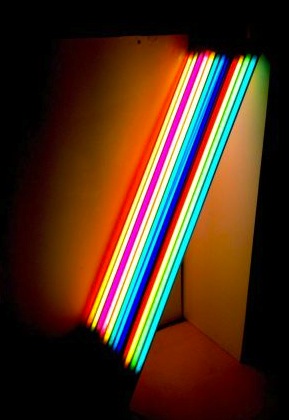I got back in the studio last week after a busy period including my Merz Barn residency and a number of exciting commissions.
I started the week by dismantling an old piece of work in order to retrieve some custom-made LED Light Sheets that had been fabricated for me over 3 years ago to fit inside a miniature chamber piece commissioned by Manchester’s Blank Media Collective for their Arts Council Funded ‘Inside’ exhibition.
As some of you already may know, I often use elements from my past works and build them into current pieces. An example of this can be seen with my sticklights that I had commissioned using my Arts Council England funding award last year. I have used them in several works since, included the work that they were initially made for;
Tempo, September 2013, In solo exhibition On Brown & Violet Grounds, Piccadilly Place Manchester
An Additive Mixture #1, October 2013, Bury Light Night
An Additive Mixture #2, November 2013, In group exhibition Synthesis, Victoria Warehouse Manchester
An Additive Mixture #3, March 2014, Solo exhibition, Exeter Phoenix
Beyond Space, August 2014, Commission for Kendal Calling Festival
I know it is cheeky to use and re-use materials, but when there is very little funding available for each project then needs must. With each/any dollop of funding I buy a new stock pile of exciting lighting equipment, this then see’s me through a period of creative endeavors.
I’m digressing.
So, I now have a set of 6 LED Light Sheets, which are an incredibly well-made, even light source that I can use within my current practice. They are made up of an LED matrix that stretches across the whole sheet of polished acrylic. They are, in all effect; a small, very flat, spectacularly neat, light box. Even though I have had them in my life for over 3 years, they have served their initial purpose and been hidden away within my old Chamber work and therefore seem like a brand new toy now.
I began by layering sheets of cut theatre gels onto the light-box surface. I started my making multicoloured laminated collages, which then quickly transformed into single or dual coloured overlays. What is interesting about them for me, is how different shades and tones of a colour can be built up using these transparencies.
These examples are using just two colours in each: yellow and amber, green and pale blue, peach and red. They are laminated in A4 100g pouches and laid over the light source for documentation. More to follow…























